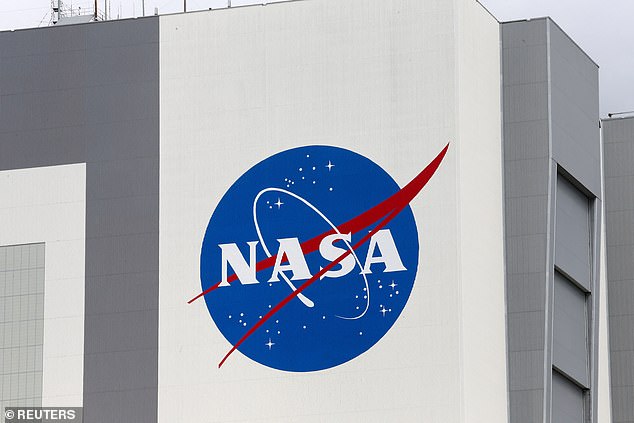NASA has laid off 550 employees at its Jet Propulsion Laboratory (JPL) – sparking fears some of its missions could be in jeopardy.
‘In order to best position JPL going forward, we are taking steps to restructure and establish an appropriate size to ensure future success,’ JPL Director Dave Gallagher said in a statement.
‘As part of this effort, JPL is undergoing a realignment of its workforce, including a reduction in staff.’
Key programmes led from JPL include the Europa Clipper, the asteroid–hunting Psyche probe, and the Deep Space Network that NASA uses to communicate with satellites.
The space agency also leads several of its Mars missions from JPL, including the Perseverance rover, the Mars sample return, and the Mars Reconnaissance Orbiter.
Concerningly, these Mars missions have already faced cuts in previous budget plans.
While NASA has not explicitly said which missions are affected, Kevin Hicks, a former rover operator for JPL, claimed ‘about a third of the Perseverance rover staff’ were cut.
‘About a third of Perseverance rover staff will be laid off, despite the mission being the penultimate step in a decades long effort to bring samples back from Mars,’ he posted on Bluesky.

NASA has laid off 550 employees at its Jet Propulsion Laboratory (JPL) – sparking fears it could leave some of its missions in jeopardy

While NASA has not explicitly said which missions are affected, Kevin Hicks, a former rover operator for JPL, claimed ‘about a third of the Perseverance rover staff’ were cut

Former JPL employees suggest that the Perseverance rover (pictured) teams have been hit hard by the layoffs, potentially jeopardising the long–anticipated Mars sample return missions
In his statement, released on Monday, Mr Gallagher explained that the affected employees came from ‘technical, business, and support areas’.
He claimed that the layoffs were necessary for the laboratory to be able to ‘compete in the evolving space ecosystem’.
‘This week’s action, while not easy, is essential to securing JPL’s future by creating a leaner infrastructure,’ he added.
‘We are grateful for the contributions of our departing colleagues, whose work has advanced exploration and innovation in ways that benefit us all.’
On the JPL Reddit forum, several employees have shared their devastation at having careers and projects suddenly cut short.
One wrote: ‘We tried to keep a positive, but realistic attitude and we even took a final group photo in front of the JPL concrete logo. However, there’s no whitewashing the “doomsday–eve” feeling that’s looming over all our heads.’
Another shared that 10 per cent of their lab and over 40 per cent of their group had been cut in the layoffs.
Others said that they had already started removing personal items from the office in preparation for further cuts.

Key programmes led from JPL include the Europa Clipper, the asteroid–hunting Psyche probe (pictured), and the Deep Space Network that NASA uses to communicate with satellites
This comes against the background of NASA’s largest yearly budget cut in its 66–year history, giving the agency less money to use than it had in 1961
Meanwhile, one employee with a decade of experience at JPL told LAist: ‘The JPL that we knew is gone.’
In an email to employees, seen by Daily Mail, Mr Gallagher wrote: ‘Following the workforce action, those continuing with JPL will be notified of their role in the new Lab structure, which will become effective Wednesday, Oct. 15.
‘I recognize that this is a tremendous amount of change in a short period of time and will be challenging for our entire community in the coming weeks.
‘While not easy, I believe that taking these actions now will help the Lab transform at the scale and pace necessary to help achieve humanity’s boldest ambitions in space.’
These latest layoffs come amid the looming threat of major cuts to NASA’s budget.
JPL has already seen multiple rounds of layoffs under the Trump administration, leading to around 855 employees losing their jobs.
The Trump administration has gutted funding for the federal science agency, promising to slash the 2026 budget by 24 per cent – from $24.8 billion to $18.8 billion (£18.57 billion to £14.07 billion).
While the budget for space exploration will actually be increasing, funding for science will almost be halved in a single year.
That has led to massive cuts to research staff and has put many of the agency’s most important scientific missions in peril.
The 2026 budget cancels 41 science projects, making up a full third of NASA’s science plans, according to data collected by the Planetary Society.
These missions include the Mars Sample Return programme, which could confirm the existence of life on the Red Planet, and the New Horizons spacecraft, which made the first fly–by of Pluto in 2015.
By cancelling projects that are already years underway and actively producing research, the Government is potentially throwing away billions of dollars of investment.
Just 19 of the biggest ongoing missions, scheduled to be prematurely axed, represent a cumulative investment of over $12 billion (£8.99 billion).
The planned cuts will also affect several important missions that have yet to start, such as the Nancy Grace Roman Space Telescope, which would have measured the light from a billion galaxies in its lifetime.
However, it is not clear what effect slashing a further 10 per cent of the JPL workforce will have on the laboratory’s ability to deliver its scientific goals.
NASA JPL has been contacted for comment.
This article was originally published by a www.dailymail.co.uk . Read the Original article here. .


